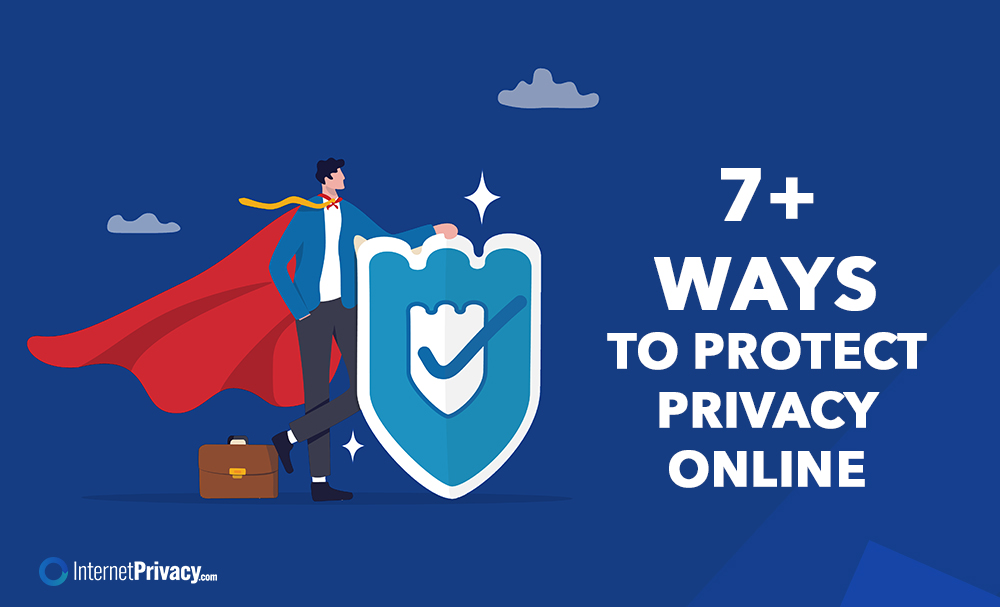The Role Of Social Media Privacy Settings In Protecting Your Personal Information

Social media privacy settings are often overlooked. These settings are designed to provide better security for your personal information. Our guide shows you how to get the most out of your privacy settings.
Social media sites such as Facebook and Twitter have privacy settings that allow users to control access to their online activities and personal information. These privacy tools play a significant role in helping protect your social media privacy, letting you limit how much of your information is accessible to the public and search services such as Google.
Social media privacy settings vary in scope and customizability between different platforms. But many sites include the following settings:
Public: This makes your posts and profile visible to anyone, even users who aren’t friends or followers.
Friends only: This makes your posts visible only to your friends and followers.
Custom: This makes your posts visible only to specific groups or individuals.
These social media privacy settings also let you control who can see your contact information, such as phone numbers and email addresses, and who can tag you in photos and posts.
Using social media privacy settings could protect you from identity theft, cyberbullying, and other online risks and privacy concerns. Limiting access to your posts and personal information on social media sites, such as your Twitter account or Facebook profile, could also help you control and manage your online image and reputation.
How can you Best Utilize Privacy Settings to Protect Your Privacy on Social Media?
Facebook and Twitter privacy settings are there for a reason. Their effective use is your first line of defense in safeguarding your privacy on social media.
Review and adjust your own privacy settings on Facebook, Twitter, and Instagram stories periodically. Most‒if not all‒social media sites have privacy options that allow you to adjust settings to control access to your posts, photos, and personal information. This is only part of a broader social media management practice; do it yourself or ask for help from a privacy professional like InternetPrivacy.
Take some time to review and adjust the default privacy settings on your social media platform from time to time. Ideally, you want your personal information available only to people you know or are comfortable with.
Here are some other things you can do to protect your privacy on Facebook and Twitter and on the internet in general:
Choose a strong password: Make a habit of using strong and unique passwords for each of your social media accounts and mobile apps. If necessary, use a password manager to generate strong passwords and store them securely.
Enable two-factor authentication: Two-factor authentication gives your social media profile an added measure of security by requiring a second verification step. This is typically a code sent to your phone via SMS, which you type in during the log-in process to Facebook or Twitter.
Be selective about the information you share: It is generally best not to post sensitive personal information on any social media platform, even to people on your friends list. This includes your home address, location, phone number, and social security number.
It is also advisable to exercise caution when sharing location, travel plans, general interests, or other details that could give away your movements or location. These precautions will prevent you from being a tempting target to cybercriminals lurking on Facebook or Twitter.
Be on guard against suspicious activity: Suspicious messages, Facebook friend requests, unknown apps, and links from new accounts or people you don’t know could be phishing or scam attempts. Be on guard against them and report suspicious activity to the support team of the platform you are using.
Update your software and privacy settings regularly: Maintain your computer, mobile devices, and apps with the latest software updates. Apply new patches as they are released and review the settings periodically to minimize and control security vulnerabilities.
The Cost and Impact of Identity Theft
Identity theft is one of the most serious consequences of unauthorized access to personal information. It can cause considerable financial and emotional harm to victims, which is why knowing how to use privacy settings on your social media platform effectively is so important.
Tracking and quantifying losses resulting from identity theft and privacy issues can be next to impossible. It is also extremely difficult to come up with an exact figure for the damage that it causes every year.
In any case, the Identity Theft Resource Center has reported nearly 1,800 individual cases in the U.S. in 2021 alone. These incidents resulted in the exposure of more than 1.1 billion records consisting of sensitive information.
Each of these breaches could potentially lead to identity theft, with costs ranging from financial losses and damage to credit scores. Businesses also typically spend considerable time and resources resolving these issues.
In the same year, the Federal Trade Commission (FTC) also received more than 1.4 million fraud and identity theft reports. These resulted in a total loss of over $1.9 billion. The fraud cases involved impostor scams, employment and tax fraud, and credit card fraud.
Keep in mind that these figures represent only reported cases of identity theft. In actuality, the number of cases and the damage caused may be considerably higher. To safeguard against the risk of identity theft, it’s important to take measures to protect personal information and guard your identity. Some of the most effective steps include:
- Monitoring social media accounts
- Reviewing credit reports
- Being careful about sharing personal information online
- Reviewing privacy settings and adjusting them accordingly as needed
What are the Worst Cases of Identity Theft and Data Breaches on Record?
There have been many high-profile cases of identity theft throughout the years, many of which have had a significant impact on their victims. Among the most infamous of these are:
The TJX Companies data breach: In 2007, TJX Companies was victimized by a security breach that exposed millions of customers’ personal and financial information. The incident was traced to a vulnerability in the wireless network and cost more than $250 million in combined losses.
The Anthem breach: In 2015, Anthem experienced a security breach that resulted in the exposure of the personal and medical details of more than 78 million individuals. One of the largest health insurers in the U.S., the company was victimized by what is now recognized as the largest data breach in the healthcare industry.
The Equifax data breach: Equifax, one of the largest credit reporting agencies in the U.S., experienced a huge security breach in 2017. The incident exposed the personal and financial information of more than 143 million individuals and is now considered one of the largest of its kind in history.
The identity theft of Michelle Brown: In 2008, Michigan resident Michelle Brown was victimized by an identity theft attack. The scheme involved the theft of her social security number, which was then used to open fraudulent bank and credit card accounts in her name. Altogether, Brown incurred more than $700,000 in losses and significant damage to her credit score and finances.
What are the Risks of Having Personal Information Accessible on Social Media?
Identity theft isn’t the only danger associated with having personal information accessible on your social media platform. If hackers can readily view your name, birthdate, phone number, location, and home address, there is an increased risk of having your identity stolen.
But there are many other risks to having your personal information readily available on Facebook and Twitter. These include:
Cyberbullying: Access to your personal information could lead to harassment, intimidation, or bullying, especially on social media platforms such as Facebook and Twitter.
Stalking: Access to your location and other personal information could enable stalkers to monitor your activities. Neglecting your privacy settings can make it easier to track your movements on social networking sites.
Reputation damage: Your private and professional life could be adversely affected if your privacy settings allow others access to inappropriate or embarrassing content you post on your social media platform.
Scams and phishing: Having your personal information available on websites could increase your chances of being tricked into revealing sensitive bank information or sending money.
Data breach: Social media platforms are just as susceptible to these attacks as other websites. If a security breach occurs on one of the social media platforms you use, your private information could be jeopardized.
How Risky is it to Share Information on Social Media?
Posting photos and sharing personal views and information on a social media site isn’t inherently dangerous if you limit it to old friends within your trusted circle. Your personal information is generally safe if you know the risks and take precautions to avoid being victimized. But you need to change the default privacy settings to your account for better protection.
Here are some ways to protect your personal details and account privacy on a social media site:
Be careful about the information you share: It’s advisable not to share sensitive information such as your phone numbers, home addresses, and social security numbers on social media. It is also best not to share locations, travel plans, or other details that hackers and identity thieves could use to track your movements.
Choose a strong password and enable two-factor authentication: Always have strong and unique passwords for each of your social media accounts and apps. Remember to enable two-factor authentication in the account settings for added security.
Set your privacy settings accordingly: Spend time reviewing and adjusting your social media privacy settings. This is especially important on social media as the right settings will allow only your approved followers to see your posts and personal information.
Be on guard against scams and phishing attacks: Never click on suspicious links or download attachments from sources you don’t know. Be especially wary of messages, invites, and apps sent to your social media profiles by unknown individuals.
Update your security software: Install security software on your computer and mobile devices and keep them updated. Adjust your settings to allow notifications that inform you of updates for better protection against security vulnerabilities.
These tips alone won’t guarantee your social media privacy and the safety of your personal information. But they will go a long way to enhancing your safety and security on social networking sites. Even so, you should be cautious about sharing personal information on any social network.
What is the Future of Data Theft Prevention?
As cybercrime becomes more advanced and cybercriminals utilize more sophisticated technology, cybercrime prevention evolves along with it. In the future, the most effective methods will likely consist of a combination of technology, policy, and education.
Here are some of the most significant developments expected in the field of data theft prevention in the future:
Improved cybersecurity: Advances in technology will result in more sophisticated tools and systems for detecting and preventing information theft. There will likely be greater reliance on artificial intelligence and machine learning algorithms, making it easier to identify suspicious behavior. New encryption and authentication methods will also be more effective at protecting sensitive data.
More effective regulation and enforcement: Governments and regulatory bodies will shift toward stronger policies and regulations on data privacy policies and security. There will probably be stricter reporting requirements for data breaches, harsher penalties for data theft, and tighter information protection standards.
Greater public awareness and increased education: More and more social media users will inevitably become aware of data theft risks. Consequently, there will be more emphasis on education and awareness aimed at helping individuals and businesses protect information and social media privacy.
We can also expect more instruction on online safety, increased awareness of scams and fraud methods, and wider spread use of strong passwords, two-factor authentication, and other security settings.
More collaboration and information sharing:
Companies, government agencies, and other stakeholders will be more open to collaboration and information sharing to prevent data theft more effectively. There will also be more focus on sharing threat intelligence and information protection methods. More organizations will likely work together to identify and respond to cyber threats.
These and other factors will likely shape the future of cybercrime prevention. It will also be beneficial to innovate constantly, collaborate, and invest in resources to remain one step ahead of evolving cyber threats.
FAQ
Is There a Real Threat to Sharing my Personal Information on Social Media?
The majority of social media platforms are generally pretty safe to use, but you still need to take certain precautions. The risk of identity theft and unauthorized data access increase significantly if too much information is readily accessible to anyone. This is why it’s so important to restrict the information you post on your online accounts and prevent search engines from accessing them by using your social media platform’s privacy settings.
What Information Should Never be Shared on Social Media?
Never share sensitive personal and financial information such as your social security number, credit card number, bank account information, or online banking passwords. It is also advisable to restrict access to your personal phone number, home address, and location, even if you keep your account private. Better still, keep the information off social media entirely.
Can I Share Sensitive Personal Information with Friends And Contacts?
There is relatively little risk when you post photos and share personal information with Facebook friends and contacts if you limit your audience or share the information via private messages.
But keep in mind that most social media platforms monitor your private messages along with your location history and even the search history of your online account. That’s how ad personalization works, and it’s why you often receive targeted ads. Therefore, it is generally a good idea to avoid sharing information with other social media users, even if you do so privately via the chat function.
What Can I do If I Suspect Someone is Trying to Obtain my Personal Information Fraudulently?
Don’t accept friend invites from other users you don’t know personally or those with whom you don’t have friends in common. Never open links sent by third-party apps or unknown individuals, either.
If you suspect someone is trying to obtain your private information via a friend request
or other fraudulent means, block that account and report it to the social media platform’s customer support service. It is also a good idea to change your password to a stronger one to further protect your online privacy.
How Do I Know if my Personal Information has Already Been Compromised?
There is often no way of knowing if your personal information has already been compromised. You can use search engines such as Google or a background check service’s dark web scan to find out if any of your personal details are available online.
Contact Internet Privacy Today
With social media as part of everyday life for millions of people, protecting your privacy can be a challenge.
Our professionals know not just how to scour the web but to ensure that your private information does not fall into the wrong hands. If you want to create secure profiles on your social media accounts and need assistance at affordable pricing, contact us today at 866-349-0130 for a free online analysis.





